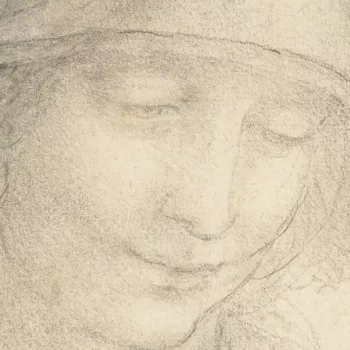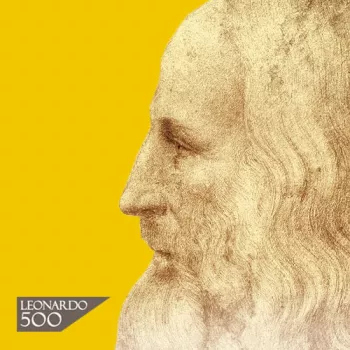Recto: Studies for casting apparatus, and miscellaneous notes. Verso: Further casting studies, and lines of poetry c.1492-3
Recto: Pen and ink, red chalk. Verso: Pen and ink | 27.8 x 19.1 cm (sheet of paper) | RCIN 912349
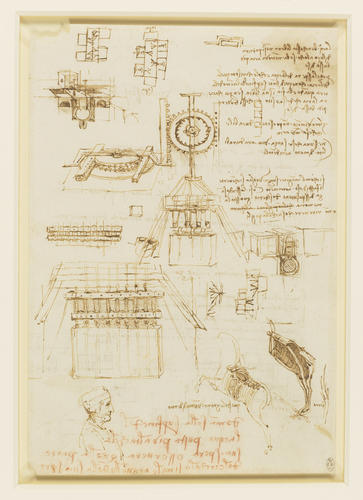
Leonardo da Vinci (1452-1519)
Recto: Studies for casting apparatus, and miscellaneous notes. Verso: Further casting studies, and lines of poetry c.1492-3
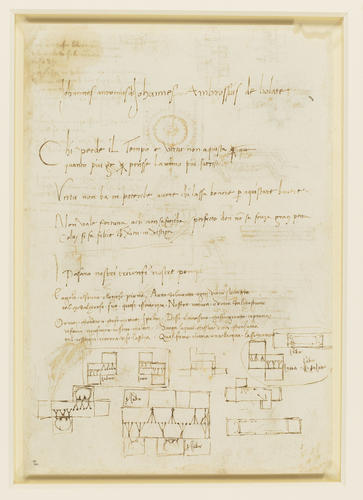
Leonardo da Vinci (1452-1519)
Recto: Studies for casting apparatus, and miscellaneous notes. Verso: Further casting studies, and lines of poetry c.1492-3
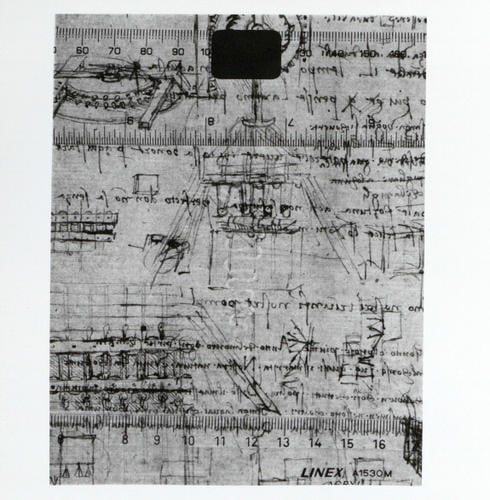
Leonardo da Vinci (1452-1519)
Recto: Studies for casting apparatus, and miscellaneous notes. Verso: Further casting studies, and lines of poetry c.1492-3



-
On the recto of the sheet, drawings of ground plans and elevations of a bronze-casting apparatus, including designs of pulleys and cog-wheel mechanisms, with accompanying notes. On the verso, notes and diagrams of ground-plans of casting apparatus, and literary quotations as if from a commonplace book.
These are some of Leonardo's designs for the casting of a bronze equestrian monument to Francesco Sforza , Duke of Milan (1401-66). Such a monument is first mentioned in a letter of November 1473 from his son Galeazzo Maria to the commissar of the ducal works, instructing him to find an artist capable of carrying out the work. Apparently nothing was done at this time; Galeazzo Maria was murdered in 1476, and his brother Ludovico went into exile between 1477 and 1479. On his return to Milan, Ludovico revived the project, and we have our first notice of Leonardo's interest in the monument in an undated draft of a letter to Ludovico, through which he hoped to gain employment at the Sforza court: 'I can carry out sculpture in marble, bronze or clay, and also I can do in painting whatever may be done, as well as any other, be he who he may. Again, the bronze horse may be taken in hand, which is to be to the immortal glory and eternal honour of the prince your father of happy memory, and of the illustrious house of Sforza.'
Although we do not now think of Leonardo as a sculptor – not one work certainly by him has survived – he was clearly considered more than competent in his time. He had trained in Verrocchio's studio, which was in the 1470s the most ambitious bronze-casting workshop in Italy, and he must have been closely aware of the early stages of Verrocchio's work on the equestrian monument to Bartolomeo Colleoni, the full-scale model of which was ready for transport in pieces from Florence to Venice in 1481.
We do not know exactly when Leonardo began work on the Sforza monument, though it seems to have been around 1487-8, possibly as part of a general contract as artist and engineer to the court. Two early designs for the monument (RCINs 912357-8) show the horse rearing, its forelegs supported either by a tree-stump or by a cowering soldier. The difficulties of casting such a piece would have been considerable, and in the summer of 1489 the Florentine ambassador wrote to Lorenzo de' Medici that Ludovico Sforza requested the names of other artists who might be more suited to the project, for he was not fully confident that Leonardo understood how to complete the work. Lorenzo could not oblige Ludovico, and evidently Leonardo overcame the duke's doubts, for on 23 April 1490 he recorded in his notebooks: 'I recommenced the horse'. He toned down the ambitious rearing pose to a more sober and conventional pacing horse, and the modelling of the horse was Leonardo's main concern for the next three years.
By the autumn of 1493 his preparations were complete. He had constructed the huge clay model, and began to make detailed preparations for the casting. The difficulties of the casting must have occupied Leonardo from the start of his work on the project, for compounding the difficulties associated with any bronze cast was the enormous size of the monument: it was to be the largest bronze cast in western Europe since antiquity, the horse alone standing perhaps 7 metres (23') high.
The recto of the present sheet shows sketches at upper left and centre right for the casting apparatus, with the horse schematically drawn as a cylinder, upside down with two straight legs pointing upwards. The small branching lines in the various geometrical-type drawings on both sides of the sheet are the channels through which the molten metal would run. The largest drawings apparently show the system of gears and pulleys to haul the immense weight of sculpture and mould out of the ground after casting. The view of the two halves of the sculpture at lower right concentrates on the iron ties holding the entire structure together.
On 20 December 1493 Leonardo recorded: 'I have decided to cast the horse without the tail and on its side.' But the cast was never made, for military affairs took precedence over artistic ones. In 1494 the troops of the French king Charles VIII swept through Italy, and the bronze intended for the horse was sent by Ludovico to his brother-in-law Ercole d'Este in Ferrara to make cannon. Leonardo may have continued to work on the mould, but without the bronze he could not proceed with the casting. In a draft of a letter of the mid- to late 1490s to the Duke, Leonardo wrote frustratedly, 'of the horse I will say nothing, for I know the times…'. And when Milan was invaded in 1499, Leonardo's huge clay model was used for target practice by French archers, and destroyed.
The notes on either side of the sheet are unconnected with the Sforza project. Those on the recto, in Leonardo's habitually mirror-writing, are mostly concerned with hydraulics. The more careful lines on the verso are, most unusually for Leonardo, written in the conventional direction, from left to right. The first line gives the name of the unidentified 'Johannes Antonius di Johannes Ambrossius de bolate' (ie. Giovanni Antonio di Giovanni Ambrogio from the town of Bollate, to the north of Milan); the remainder are moralising quotations from Dante, Petrarch and other Italian poets, probably copied from a commonplace book rather than directly from their literary sources. For example:
'Put off this sloth,' the master said, 'for shame!
Sitting on feather-pillows, lying reclined
Beneath the blanket is no way to fame -Fame, without which man's life wastes out of mind,
Leaving on earth no more memorial
Than foam in water or smoke upon the wind'
(Dante, Inferno, XXIV, 46-51; trans. Dorothy L. Sayers, Penguin Classics, 1949)Provenance
Bequeathed to Francesco Melzi; from whose heirs purchased by Pompeo Leoni, c.1582-90; Thomas Howard, 14th Earl of Arundel, by 1630; Probably acquired by Charles II; Royal Collection by 1690
-
Creator(s)
Acquirer(s)
-
Medium and techniques
Recto: Pen and ink, red chalk. Verso: Pen and ink
Measurements
27.8 x 19.1 cm (sheet of paper)
Markings
watermark: Serpent. Single line. Close to Briquet 13708
Object type(s)
Other number(s)
RL 12349Alternative title(s)
Studies for casting an equestrian monument (recto); Further casting studies, and lines of poetry (verso)




